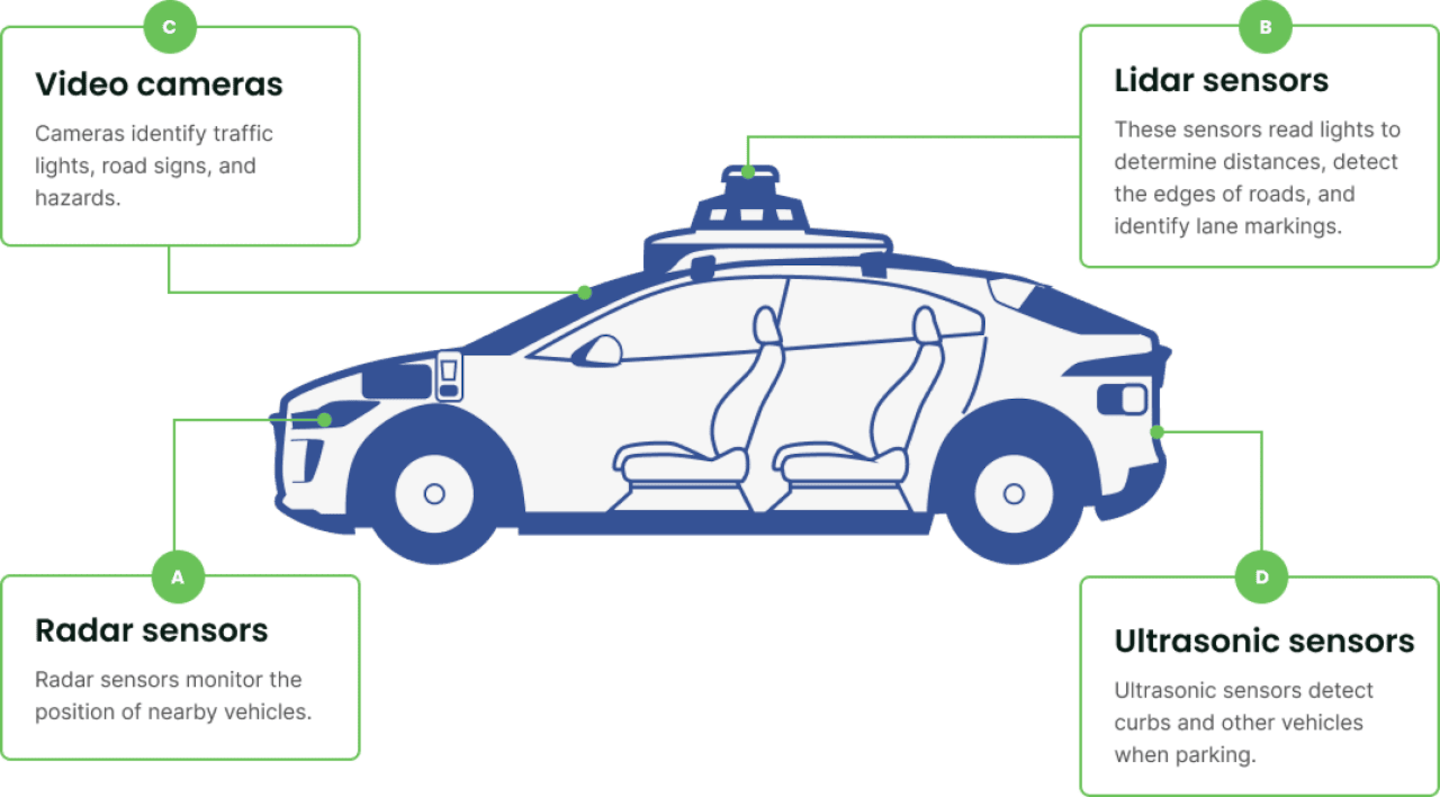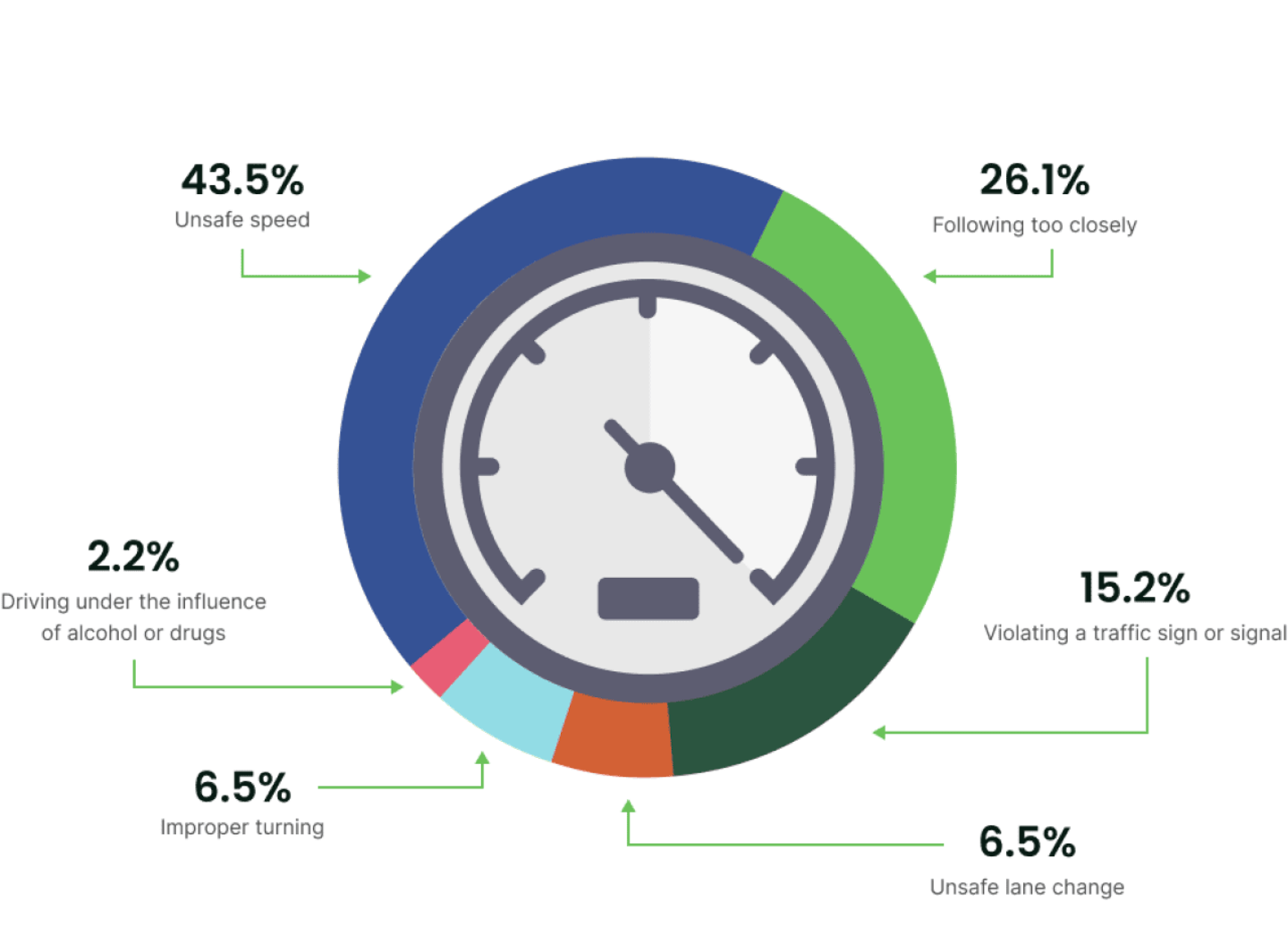14 interesting facts about self-driving cars
While they may seem like something out of a sci-fi movie, driverless cars are quickly becoming part of the new normal. Here, Salvi, Schostok & Pritchard P.C. shares 14 interesting facts about self-driving cars.
1. The Idea of Driverless Cars Dates Back to the 1930s
The original idea of driverless cars was introduced by General Motors in a 1939 exhibit and made a reality in 1958.
2. Waymo Was a Secret
By now, most people have heard of Waymo, Google's launch into the self-driving car industry. Waymo vehicles have currently logged the most miles out of all the various autonomous vehicle models. However, Waymo began as a secret.
The project was started by Sebastian Thrun, who led his robotics team at Stanford University to win the DARPA Grand Challenge. In 2012, a few years after beginning the project, Google revealed that its fleet of autonomous vehicles had driven over 300,000 miles. By 2020, the vehicles had logged more than 20 million miles on public roads.
3. Driverless Car Stats Are Showing Only More Growth
- More than 1,400 driverless vehicles are currently in testing.
- Over 3 billion miles have been logged using Tesla's autopilot feature.
- Waymo drove over 20 million miles across 25 U.S. cities.
- Apple logged more than 450,000 miles in California in one year.
- Lyft and Aptiv deployed more than 100,000 commercial Robo-taxis in Las Vegas.
- The global self-driving vehicles industry is currently expanding by 16% annually.
- Sales of self-driving vehicles are projected to be 58 million units by 2030.
- The global autonomous vehicle market is expected to reach nearly $450 million by 2035.
4. There Are 6 Levels of Automation
According to the Society of Automotive Engineers, there are six levels of driving automation that range from level 0 with no automation to level 5, a fully automated, driverless car. Here is more information about each level of automation.
LEVEL 0: No automation
The human driver is responsible for all driving actions.
LEVEL 1: Driver assistance
An Advanced Driver Assistance System (ADAS) may assist the driver with basic driving functions, such as accelerating, braking, or steering. Adaptive cruise control is an example of Level 1 automation. This feature controls acceleration and braking, usually in highway driving. Drivers may be able to remove their foot from the pedal using Level 1 automation.
LEVEL 2: Partial automation
Partial automation allows the vehicle to perform more complex functions and simultaneous actions, such as controlling steering, accelerating, and braking. However, the human driver must continue to pay attention. Level 2 automation includes highway or traffic jam assistance.
LEVEL 3: Conditional automation
This is the first level where the human driver may be able to disengage from driving in certain situations, such as in good weather and traffic conditions. However, the driver must be able to reengage when the system requests it. The vehicle can stop in case of a failure.
LEVEL 4: High automation
The vehicle's autonomous driving system can monitor the driving environment and operate all driving functions for routine routes and conditions. The vehicle can alert the driver if there is something beyond its limits that requires the driver to take over. If the human driver does not respond, the vehicle will secure itself.
LEVEL 5: Full automation
No human driver is necessary at this level of automation because the vehicle is fully autonomous and can operate under any conditions. Humans may not be in the vehicle. Vehicles at this level of automation may not have a steering wheel or gas or brake pedals.
5. Autonomous Vehicles Rely on Many Sensors
Autonomous vehicles are typically equipped with many different sensors. Sensors monitor various data points and feed this information into the vehicle’s computer. There may be several sensors in the vehicle, including:
Salvi, Schostok & Pritchard P.C.
Autonomous vehicles use sensors and other technologies to create a map of their surroundings. As they receive more information, they fill in more information on the map. They process the sensory input and plot a path based on it. The vehicles are also equipped with complex algorithms, predictive machine learning systems, and object recognition tools to help the software follow traffic rules and avoid collisions.
6. The NHTSA Has Identified Five Major Benefits of Autonomous Cars
The National Highway Traffic Safety Administration has identified five major advantages of autonomous vehicles.
Safety
Most serious car accidents are caused by human error, so the NHTSA believes that autonomous vehicles could be safer by removing human drivers and eliminating their potential mistakes.
Economic and societal benefits
Motor vehicle collisions cost more than $250 billion in economic activity each year. Car accidents cause injuries, property damage, lost workplace productivity, deaths, and decreased quality of life. Eliminating the major factor that causes these accidents (the human element) could save many of these costs.
Efficiency and convenience
Roads could be more easily maintained and regulated with autonomous vehicles. Drivers spent nearly 4 billion hours stuck in traffic delays in 2024
Mobility
Driverless vehicles could help people with disabilities that prevent them from driving. Increased mobility could provide new pathways to employment and a higher quality of life.
Environmental
Driverless vehicles are usually electric, which can improve efficiency and spur less personal driving, resulting in significant environmental benefits.
7. Autonomous Cars Still Face Safety Challenges
While these potential benefits are exciting, autonomous vehicles still face challenges that pose a threat to safety.
Lidar and radar sensor limitations
Most serious car accidents are caused by human error, so the NHTSA believes that autonomous vehicles could be safer by removing human drivers and eliminating their potential mistakes.
Traffic
Autonomous vehicles may struggle in highly congested areas. Driverless cars are more likely to be involved in rear-end collisions, so they may have difficulty maintaining a safe distance in bumper-to-bumper traffic.
Security breaches
Driverless vehicles may be more susceptible to manipulation due to hacking.
Reliance on artificial intelligence
Drivers may become overly reliant on the technology, putting themselves in situations where they cannot quickly take control of the vehicle. Software may malfunction, leading to other accidents.
8. Driverless Cars Might Be Safer Now
A study by the University of Michigan Transportation Research Institute, General Motors and Cruise published in late 2023 found that human rideshare drivers were more likely to be responsible for traffic crashes in San Francisco after reviewing data from 5.6 million miles of human rideshare drivers compared to 1 million miles of driverless rideshares. The researchers found that autonomous vehicles had 65% fewer collisions than humans. However, this technology is still being developed, so there may not be sufficient information to determine which set of drivers is really safer.
9. The First Pedestrian Death Involved an Uber Driver
In 2018, a woman in Tempe, Arizona, was behind the wheel of a self-driving Uber vehicle that hit and killed a pedestrian. She was charged with negligent homicide and was believed to have been distracted by her phone at the time of the incident. The accident led to Arizona temporarily suspending driverless operations in the state. Uber's self-driving cars were involved in 37 minor accidents before the pedestrian death.
10. Driverless Cars Are More Likely to Be Involved in Rear-End Accidents
A study published in a 2020 issue of the journal Transportation Research Procedia shows that out of the motor vehicle collisions studied in California between 2015 and 2017, 64.2% of those involving autonomous vehicles were rear-end accidents, compared to 28.3% of accidents involving conventional vehicles.
11. Most Autonomous Vehicle Accidents Occurred When the Vehicle Proceeds Straight
The same study revealed that 65.2% of accidents involving autonomous vehicles occurred when the vehicle proceeded straight when it should not have. Other common driving maneuvers involving autonomous vehicles and how often they contributed to accidents include:
- 13% making a left turn
- 8.7% making a right turn
- 8.7% passing another vehicle
- 2.2% changing lanes
- 2.2% entering traffic
12. Driving at an Unsafe Speed Is the No. 1 Cause of Driverless Car Accidents
The researchers also found the following driver errors in crashes involving autonomous vehicles:
Salvi, Schostok & Pritchard P.C.
13. Drivers Have Died While in ‘Autopilot’
To date, Tesla's Deaths database suggests 58 people have died in accidents involving the vehicle's autopilot program as of May 2025.
14. Driverless Cars Were Involved in Nearly 400 Crashes in 11 Months
In June 2022, automakers reported nearly 400 crashes that involved vehicles with partially automated driver assistance systems over an 11-month period in 2021, according to the NHTSA. This included 273 crashes involving Tesla vehicles.
This story was produced by Salvi, Schostok & Pritchard P.C. and reviewed and distributed by Stacker.








